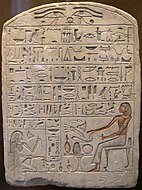This article has multiple issues. Please help improve it or discuss these issues on the talk page. (Learn how and when to remove these messages)
|
Calligraphy (from Ancient Greek καλλιγραφία (kalligraphía) 'beautiful writing') is a visual art related to writing. It is the design and execution of lettering with a pen, ink brush, or other writing instrument.[1]: 17 Contemporary calligraphic practice can be defined as "the art of giving form to signs in an expressive, harmonious, and skillful manner".[1]: 18
In East Asia and the Islamic world, where more flexibility is allowed in written forms, calligraphy is regarded as a significant art form, and the form it takes may be affected by the meaning of the text or the individual words.
In the Western world, the aim of calligraphy is normally regarded as only to achieve attractive writing that is usually consistent within each piece of writing,[by whom?] with little or no interpretation of the text attempted.[citation needed]
Modern Western calligraphy ranges from functional inscriptions and designs to fine-art pieces where the letters may or may not be readable.[1][page needed] Classical calligraphy differs from type design and non-classical hand-lettering, though a calligrapher may practice both.[2][3][4][5]
Western calligraphy continues to flourish in the forms of wedding invitations and event invitations, font design and typography, original hand-lettered logo design, religious art, announcements, graphic design and commissioned calligraphic art, cut stone inscriptions, and memorial documents. It is also used for props, moving images for film and television, testimonials, birth and death certificates, maps, and other written works.[6][7]
- ^ a b c Cite error: The named reference
mediaville1996was invoked but never defined (see the help page). - ^ Pott, G. (2006). Kalligrafie: Intensiv Training [Calligraphy: Intensive Training] (in German). Verlag Hermann Schmidt. ISBN 978-3-87439-700-1.
- ^ Pott, G. (2005). Kalligrafie: Erste Hilfe und Schrift-Training mit Muster-Alphabeten (in German). Verlag Hermann Schmidt. ISBN 978-3-87439-675-2.
- ^ Zapf 2007.
- ^ Zapf, H. (2006). The World of Alphabets: A kaleidoscope of drawings and letterforms. CD-ROM
- ^ Propfe, J. (2005). SchreibKunstRaume: Kalligraphie im Raum Verlag (in German). Munich: Callwey Verlag. ISBN 978-3-7667-1630-9.
- ^ Geddes, A.; Dion, C. (2004). Miracle: a celebration of new life. Auckland: Photogenique Publishers. ISBN 978-0-7407-4696-3.



